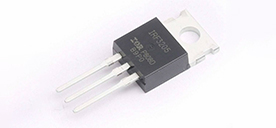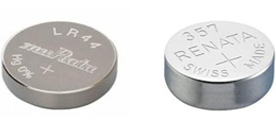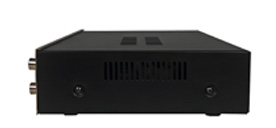Using 51 microcontroller to build an intelligent electronic component access system
2024/5/14 17:38:35
Views:
In today's rapidly developing information age, electronic technology is the fundamental guarantee for promoting the progress of the times. Large universities and companies conduct various electronic experiments every day, and chips are an indispensable part of these experiments. Due to the large variety of chips available, it is particularly important to be able to quickly and easily remove the required chips from different models. Chip storage cabinets available on the market usually have a push-pull structure with multiple drawers. When using a specific chip model, the experimenter must search through multiple drawers based on the labels, which is time-consuming, labor-intensive, and error-prone. Laboratory managers also have difficulties with chip management. You need to open the drawer regularly to check the remaining chips and replenish them in time so as not to affect the progress of the experiment. Currently, there is no chip cabinet on the market that can make it easier for experimenters to select chips and managers to carry out intelligent management. For this reason, it is necessary to solve these problems by developing intelligent chip cabinets.
System hardware and software design
3.1 Hardware circuit design
The main control chip of the system uses STC12C5A60S2 microcontroller, PCA9685 chip as the steering gear control chip, and is equipped with a 7-inch TJC8048X270011 screen as the human-computer interaction interface. At the same time, the system integrates audible and visual warning functions using a buzzer and 16 LED lamp beads. In addition, the ESP8266 module is used to communicate with the mobile phone APP to achieve remote control and data reception.
2.1 Structure of the steering gear shift lock
The system uses a box with a length of 38cm, a width of 16cm and a height of 47cm with a total of 18 storage boxes in 6 rows and 3 columns as the main body of the access cabinet. The back of the box is hollow. By attaching an acrylic strip and fixing the servo, the storage box can be locked and unlocked using the rocker arm on the servo drive shaft. After the user selects the required operation on the touch screen, the system automatically controls the corresponding servo to unlock or lock the storage box. This can ensure accurate access to the components in the storage box, prevent incorrect storage, and ensure accurate recording of the quantity of various components.
Serial communication design
The microcontroller communicates with the serial port screen through serial port 1, receives instructions and displays real-time information, and at the same time sends data to the Wi-Fi module through serial port 2. The ESP8266 module serves as a wireless communication module to realize the connection between mobile APP and the system. ESP8266 receives the data, decodes it and transmits it to the mobile application. At the same time, it forwards the information sent by the APP to the microcontroller. After processing by the microcontroller, it will be displayed on the serial port screen. Finally, the mutual communication between the serial port screen, the microcontroller, the Wi-Fi module and the mobile phone APP is realized.
Sound and light prompt design
An LED lamp bead is installed under each storage box to quickly find the corresponding components through bright light prompts, and a buzzer circuit is added as a prompt. When the user selects a component on the screen, the corresponding servo of the storage box is unlocked, the LED light turns on and a buzzer sounds. After the process is completed, the storage box closes, the indicator light turns off and the buzzer notifies that the process is complete.
Multi-channel steering gear control design
The system uses 16 storage boxes, each equipped with a model SG0 servo for locking and unlocking. In order to simplify control, PCA9685 control board is used to communicate with microcontroller via IIC protocol to achieve efficient control of multi-channel servos. PCA9685 has a built-in PWM driver and clock that can control 16 servos at the same time, saving microcontroller resources and making the system operate more efficiently.
Theoretical calculation and design analysis
The STC12C5A60S2 microcontroller serves as the primary
he control chip in the system. It has two hardware serial ports, which can meet the communication needs between the microcontroller, mobile phone APP and serial port screen. The low costs and the high running speed are advantages. The low cost and fast running speed are advantages. Through the PCA9685 control board, the microcontroller can efficiently control multiple servos, simplifying circuit design and improving system reliability and usability.
finally
The smart chip cabinet is controlled by the STC12C5A60S2 microcontroller, enabling intelligent access and management of electronic components. The system adopts multi-channel steering gear control, serial interface communication and sound D and light prompts and other designs to ensure accurate access to components, improve management efficiency and solve the problem of difficult management of a large number of components in the laboratory. This smart chip cabinet is suitable for electronic laboratories in universities and enterprises and has wide application prospects.
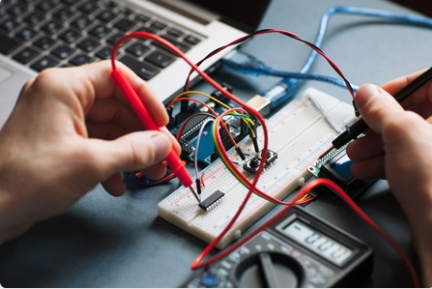
System hardware and software design
3.1 Hardware circuit design
The main control chip of the system uses STC12C5A60S2 microcontroller, PCA9685 chip as the steering gear control chip, and is equipped with a 7-inch TJC8048X270011 screen as the human-computer interaction interface. At the same time, the system integrates audible and visual warning functions using a buzzer and 16 LED lamp beads. In addition, the ESP8266 module is used to communicate with the mobile phone APP to achieve remote control and data reception.
2.1 Structure of the steering gear shift lock
The system uses a box with a length of 38cm, a width of 16cm and a height of 47cm with a total of 18 storage boxes in 6 rows and 3 columns as the main body of the access cabinet. The back of the box is hollow. By attaching an acrylic strip and fixing the servo, the storage box can be locked and unlocked using the rocker arm on the servo drive shaft. After the user selects the required operation on the touch screen, the system automatically controls the corresponding servo to unlock or lock the storage box. This can ensure accurate access to the components in the storage box, prevent incorrect storage, and ensure accurate recording of the quantity of various components.
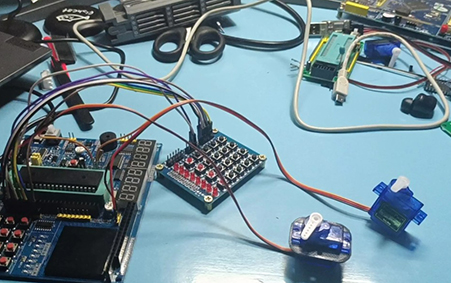
Serial communication design
The microcontroller communicates with the serial port screen through serial port 1, receives instructions and displays real-time information, and at the same time sends data to the Wi-Fi module through serial port 2. The ESP8266 module serves as a wireless communication module to realize the connection between mobile APP and the system. ESP8266 receives the data, decodes it and transmits it to the mobile application. At the same time, it forwards the information sent by the APP to the microcontroller. After processing by the microcontroller, it will be displayed on the serial port screen. Finally, the mutual communication between the serial port screen, the microcontroller, the Wi-Fi module and the mobile phone APP is realized.
Sound and light prompt design
An LED lamp bead is installed under each storage box to quickly find the corresponding components through bright light prompts, and a buzzer circuit is added as a prompt. When the user selects a component on the screen, the corresponding servo of the storage box is unlocked, the LED light turns on and a buzzer sounds. After the process is completed, the storage box closes, the indicator light turns off and the buzzer notifies that the process is complete.
Multi-channel steering gear control design
The system uses 16 storage boxes, each equipped with a model SG0 servo for locking and unlocking. In order to simplify control, PCA9685 control board is used to communicate with microcontroller via IIC protocol to achieve efficient control of multi-channel servos. PCA9685 has a built-in PWM driver and clock that can control 16 servos at the same time, saving microcontroller resources and making the system operate more efficiently.
Theoretical calculation and design analysis
The STC12C5A60S2 microcontroller serves as the primary
he control chip in the system. It has two hardware serial ports, which can meet the communication needs between the microcontroller, mobile phone APP and serial port screen. The low costs and the high running speed are advantages. The low cost and fast running speed are advantages. Through the PCA9685 control board, the microcontroller can efficiently control multiple servos, simplifying circuit design and improving system reliability and usability.
finally
The smart chip cabinet is controlled by the STC12C5A60S2 microcontroller, enabling intelligent access and management of electronic components. The system adopts multi-channel steering gear control, serial interface communication and sound D and light prompts and other designs to ensure accurate access to components, improve management efficiency and solve the problem of difficult management of a large number of components in the laboratory. This smart chip cabinet is suitable for electronic laboratories in universities and enterprises and has wide application prospects.
Related Information
-
-
Phone
+86 135 3401 3447 -
Whatsapp

